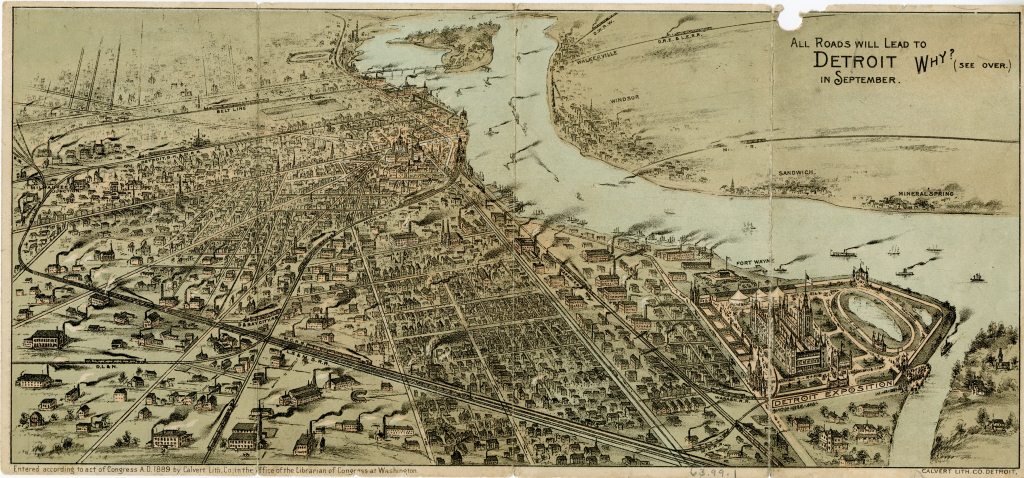All Roads Lead to Delray


And a mighty city requires a mighty exposition. A supplement in the August 17, 1889 issue of Harper’s Weekly promised that, only a “profession pedestrian” would be able to take in the scope of the event in one day. Luckily for all the amateur ambulists, fair goers were treated to displays of livestock, musicians, a gallery of over 300 paintings, and demonstrations of technological marvels for ten days. And of course there was the exposition’s very regal main building itself, designed by Louis Kamper, fresh from designing the Hecker House at Woodward and Ferry Avenues. Unfortunately the structures did not last long after the exposition’s two more annual occurrences; in 1895 the grounds were razed by the Solvay Process Company, eager to mine the salt beneath. The same access to railroads and waterways that made this area prime for such a grand exposition, coupled with the natural resources beneath also made it fertile for heavy industry, continuing to feed the city’s growth into the 20th century.

